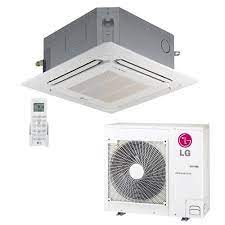What is the difference between central and ductless AC?
Knowing which AC is ideal for your home is crucial for cooling it appropriately. Since most homeowners are confused about whether they should opt for a central or ductless system, we have gathered some information about the two. Interested readers should read the article to learn more.
Central vs Ductless air conditioners
The vital difference between the ductless mini-split and central air conditioning system is based on the price, maintenance work, and look and feel of each system.
Pros and cons of mini-split systems
The ductless mini-split units feature two crucial components, an indoor air handling unit and an outdoor compressor. They have a conduit that links these two.
Advantages:
The ductless systems do not need ductwork to operate. This makes them suitable for older buildings that have thick walls and no space for vents.
These systems are a preferable choice for cooling indoors since they maintain a constant room temperature, unlike other units that go on/off throughout the day.
The mini-split units are capable of working in reverse. They can absorb the heat from the outside air and move it indoors.
The systems are available in a compact size that allows for greater flexibility in terms of temperature zoning. The air conditioning only happens in rooms where air handlers are located.
The mini-splits work quietly when compared to the central air conditioning systems. Also, they are easier to install. Some ductless models even come with the highest energy efficiency rating.
Disadvantages:
Although these systems can help you save money in the long run, the initial cost of installing these systems can run high.
One needs professionals to set up these units, as improper sizing or placement can mean compromised efficiency.
Wall-mounted air conditioners are not attractive. Installing them might mean compromising the aesthetics.
Pros and cons of central AC systems
The central ACs treat the air at a central location and distribute it with the help of fans and a series of ducts. The supply ducts transfer the cool air to the room. When it becomes warm as it circulates through the property, it flows back to the AC through return ducts.
Advantages:
If you are searching for an AC that can maintain the temperature of your whole house, central AC might be your best choice. The newer models are energy-efficient and help reduce humidity.
Since they are virtually invisible, you don’t need to compromise on aesthetics if you install these units at home.
Disadvantages
These systems cost moderately high.
Installing central air conditioning requires annual maintenance. You will have to get the air ducts cleaned in three to five years.
While the mini-split units can be expensive and less attractive, they do not require much maintenance. On the other hand, central systems are cheap and virtually invisible, but they do not require annual maintenance.



Comments
Post a Comment